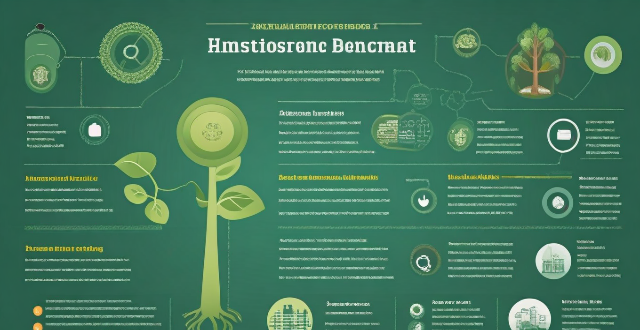Policies National

What is the role of national governments in implementing climate change policies ?
The role of national governments in implementing climate change policies is crucial. They are responsible for developing and enforcing laws, regulations, and policies that address the causes and consequences of climate change. This involves a wide range of actions, from reducing greenhouse gas emissions to adapting to the impacts of climate change. National governments have several key responsibilities when it comes to climate change, including legislation and regulation, international cooperation, funding and support for sustainable development, public awareness and education, and encouraging private sector involvement. Examples of national government actions on climate change include setting renewable energy targets, implementing carbon pricing mechanisms, participating in international climate agreements, and taking adaptation measures.

How do climate change negotiations influence national environmental policies ?
The influence of climate change negotiations on national environmental policies is significant, as they set international targets and promote technology transfer, financial support mechanisms, adaptation measures, stronger legal frameworks, and public awareness. These discussions help countries develop comprehensive policies that integrate climate considerations across various sectors, ensuring policy coherence and effective action towards global climate goals.

What role do international agreements play in shaping national climate and environmental policies ?
International agreements significantly influence national climate and environmental policies by providing a platform for global collaboration, setting shared objectives, establishing guidelines, promoting cooperation, and enhancing transparency and accountability. Examples include the UNFCCC, CBD, Basel Convention, Montreal Protocol, and Ramsar Convention, which have shaped policies on climate change mitigation, biodiversity conservation, waste management, ozone layer protection, and wetland preservation, respectively. These agreements are crucial for addressing global environmental challenges and driving progress towards sustainability.

How does climate change impact national security ?
Climate change impacts national security in various ways, including economic disruption, social unrest, and political instability. To mitigate these effects, it is essential to take action at both the national and international levels, such as reducing greenhouse gas emissions, investing in renewable energy sources, and adapting to the inevitable changes brought about by climate change.

Does restrictive immigration policy improve national security ?
The text discusses the complex question of whether restrictive immigration policy enhances national security. It explores various aspects including economic impact, social cohesion, international relations, and internal security dynamics to provide a nuanced understanding. The text concludes that while a restrictive immigration policy might seem appealing from a national security standpoint, it is not a silver bullet, as benefits must be weighed against potential negative impacts on different factors. A balanced approach that ensures thorough vetting without undue restrictions might prove more effective in enhancing national security in the long term.

What policies are being implemented to mitigate the effects of climate change on national security ?
Climate change poses a significant threat to national security, affecting areas such as food and water scarcity, natural disasters, and displacement of people. Governments around the world are implementing various policies to mitigate these effects and ensure the safety and stability of their nations. Key policies include transitioning to clean energy sources, promoting sustainable agriculture practices, protecting coastal communities and infrastructure, collaborating globally to address climate change, and building resilience to natural disasters through disaster risk reduction and preparedness. By implementing these policies, governments aim to not only reduce the direct effects of climate change but also strengthen their overall capacity to handle related challenges, ensuring the continued security and stability of their nations.

How can climate financing be integrated into national policies ?
Climate financing is vital for addressing climate change challenges. Integrating it into national policies requires developing a climate change strategy, incorporating it into budgets, enhancing public-private partnerships, leveraging international finance, and promoting climate-resilient investments. This multifaceted approach ensures effective mobilization and allocation of resources towards reducing emissions, enhancing carbon sinks, and building resilience to climate impacts.

How do international climate agreements influence national policies on renewable energy ?
International climate agreements significantly shape national renewable energy policies by setting targets, offering financial aid and technology transfer, promoting innovation and collaboration, and creating market opportunities. This influence is evident in countries' ambitious renewable energy goals, their participation in global initiatives, and the growth of related industries. Such concerted efforts are crucial for achieving a sustainable, low-carbon future.

How can climate finance be integrated with national development plans and strategies ?
Integrating Climate Finance with National Development Plans and Strategies emphasizes the importance of aligning climate finance with national priorities, ensuring policy coherence, participatory planning, resource mobilization, risk management, monitoring and evaluation, capacity building, transparency and accountability. Key implementation steps include assessment and diagnosis, formulation of integrated strategies, financing mechanisms, implementation and disbursement, and reporting and learning. By integrating climate finance, countries can address climate change while promoting sustained economic growth and social well-being.

How can biodiversity be integrated into national development plans ?
Biodiversity is crucial for ecosystem services and human well-being. Integrating it into national development plans ensures sustainable growth. Key strategies include implementing National Biodiversity Strategies and Action Plans, legal protections, sustainable land use planning, economic incentives, education, and research. These measures promote conservation while balancing human needs, fostering a future where biodiversity thrives alongside human prosperity.

What are the legal and policy frameworks for water resource management at the national and international levels ?
Water resource management is a critical issue that affects the sustainability of ecosystems, the economy, and human well-being. To address this challenge, various legal and policy frameworks have been established at both national and international levels. At the national level, water resource management is governed by a combination of laws, regulations, and policies aimed at ensuring equitable access to water resources, protecting the environment, and promoting sustainable development. International legal and policy frameworks play a crucial role in addressing transboundary water issues and promoting global cooperation on water resource management. Effective water resource management requires a comprehensive approach that encompasses both national and international legal and policy frameworks.

Can national governments alone tackle the issue of climate change, or is international cooperation necessary for effective global climate governance ?
Climate change is a complex issue that requires global cooperation to effectively tackle. While national governments can implement policies and invest in research within their borders, the interconnectedness of climate change factors necessitates international collaboration. Global agreements, technology transfer, and financial support are crucial components of this cooperation. Ultimately, a combination of national efforts and international partnerships is needed for effective climate governance.

What policies and international agreements aim to protect biodiversity ?
The text provides an overview of various policies and international agreements that aim to protect biodiversity, including the Convention on Biological Diversity (CBD), the United Nations Framework Convention on Climate Change (UNFCCC), the Ramsar Convention, the International Union for Conservation of Nature (IUCN), the World Wildlife Fund (WWF), the Nagoya Protocol, the Global Environment Facility (GEF), national policies and legislation, and the Great Ape Project. These initiatives are crucial for maintaining ecosystem health and human well-being, but face challenges in implementation and enforcement.

Can climate variability be mitigated through international agreements and policies ?
The text discusses the potential of international agreements and policies to mitigate climate variability, highlighting their roles in setting goals, promoting cooperation, creating legal obligations, and raising awareness. It also explores the impact of various policies on emission reduction, adaptation, research and development, and education. However, it acknowledges challenges such as political will, economic considerations, equity and justice, and compliance and enforcement. The text concludes that while these measures are crucial, they must be part of a comprehensive strategy that includes local efforts, technological advancements, and individual actions.

What are the legal frameworks and policies supporting the establishment of ecological protection areas ?
The establishment of ecological protection areas is supported by various legal frameworks and policies that aim to conserve biodiversity, protect ecosystems, and promote sustainable development. These frameworks and policies are essential for ensuring the effective management and protection of ecological protection areas. Some key legal frameworks and policies supporting the establishment of ecological protection areas include international legal frameworks such as the Convention on Biological Diversity (CBD) and the United Nations Convention to Combat Desertification (UNCCD), national legal frameworks such as National Biodiversity Strategies and Action Plans (NBSAPs) and national environmental policies, regional legal frameworks such as regional conservation agreements, and sector-specific legal frameworks such as forestry laws and regulations and wildlife conservation laws and regulations. When establishing ecological protection areas, it is essential to follow best practices such as conducting thorough scientific research, engaging local communities in the planning and management process, developing clear management plans, monitoring ecological protection areas regularly, and promoting sustainable tourism activities within them.

How does energy transition affect national security and geopolitics ?
Energy transition has significant implications for national security and geopolitics, driven by concerns over climate change, energy security, and economic competitiveness. It promotes diversification of energy sources, enhances energy independence, and addresses cybersecurity risks, strengthening national security. Energy transition can alter power dynamics, mitigate climate change, enhance economic competitiveness, and contribute to environmental security, all of which have significant geopolitical consequences. As the world continues to transition towards renewable energy, it is essential for countries to develop strategies to navigate the complex interplay between energy transition, national security, and geopolitics.

In what ways does sports culture contribute to national identity ?
Sports culture significantly contributes to national identity by representing national values, promoting cultural exchange and diplomacy, preserving historical traditions, evoking national pride and unity, and enhancing economic growth. It serves as a powerful tool for uniting people under a common banner and showcasing the unique character of a nation to the world.

What are some successful examples of circular economy policies ?
The circular economy is a sustainable economic model that aims to minimize waste and pollution by keeping resources in use for as long as possible. Successful examples of circular economy policies include the European Union's Circular Economy Package, Netherlands' National Circular Economy Programme, China's Circular Economy Promotion Law, Japan's Sound Material-Cycle Society Act, and state-level initiatives in the United States. These policies focus on waste reduction, resource efficiency, extended producer responsibility, product stewardship, and public-private partnerships to promote a more sustainable future.

How effective are current climate and environmental policies in reducing carbon emissions ?
The effectiveness of current climate and environmental policies in reducing carbon emissions varies, with global initiatives like the Kyoto Protocol and Paris Agreement showing mixed results. National policies such as renewable energy targets, carbon pricing mechanisms, and energy efficiency standards have contributed to emission reductions but face political and economic challenges. Technological advances have lowered the cost of clean energy solutions. However, significant reductions require stronger governmental commitment, financial investments in green technology, and increased public engagement.

What is the impact of Brexit on UK immigration policies ?
Brexit has had a significant impact on UK immigration policies, including the end of free movement for EU citizens, the introduction of a points-based immigration system, a settled status scheme for EU citizens, changes in student visa policies, and increased scrutiny of immigration applications. These changes reflect the UK government's desire to regain control over its borders and shape its immigration policies according to national interests.

How do biosafety policies differ across countries and regions ?
Biosafety policies are crucial for protecting public health and the environment from potential risks associated with biotechnology. These policies vary significantly across countries and regions due to differences in regulatory frameworks, cultural values, economic resources, and technological advancements. The United States has a well-established regulatory framework for biosafety, while the European Union has a strict regulatory framework. In Asia, China and India have relatively new biosafety laws. Cultural values also play a significant role in shaping biosafety policies across countries and regions. Economic resources can impact the implementation and enforcement of biosafety policies, and technological advancements can introduce new challenges and opportunities.

How does the globalization of sports affect national identities and patriotism ?
The globalization of sports has had a significant impact on national identities and patriotism, with both positive and negative effects. On the positive side, it has increased exposure to different cultures, provided opportunities for international collaboration, and brought economic benefits to host countries. However, it has also led to concerns about diluted national identity, commercialization and corruption in sports, and unequal access to resources between developed and developing nations. Balancing these aspects will be crucial in ensuring that sports continue to unite rather than divide us on a global scale.

Can renewable energy sources contribute to national security in the context of climate change ?
Renewable energy sources can contribute to national security by reducing dependence on fossil fuels, mitigating the impacts of climate change, and promoting economic stability.

Can you provide examples of successful inclusive policies from around the world ?
Inclusive policies are designed to ensure equal opportunities for all individuals, regardless of their background or circumstances. Examples of successful inclusive policies from around the world include the Disability Rights Act in the United States, which protects the rights of individuals with disabilities; Iceland's Gender Equality Act, aimed at achieving full gender equality; India's National Rural Health Mission, a large-scale public health initiative to provide essential healthcare services to rural populations; and Canada's Affordable Housing Program, aimed at creating more affordable housing options for low-income households. These policies demonstrate the importance of addressing social inequalities and promoting inclusivity in various areas of society.

What impact does climate awareness have on global policies and decisions ?
Climate awareness has led to the implementation of various environmental, economic, and social policies at national and international levels. These policies aim to reduce greenhouse gas emissions, promote renewable energy sources, protect forests, and raise public awareness about climate change. Some examples include carbon taxes, renewable energy targets, forest protection laws, the Paris Agreement, the Kyoto Protocol, cap-and-trade systems, feed-in tariffs, tax credits for renewable energy projects, building codes, appliance standards, school curricula on climate change, and community workshops.

How do national sports teams represent their country's image on the international stage ?
National sports teams play a crucial role in representing their country's image on the international stage. They are seen as ambassadors of their nation, showcasing values, culture, and spirit through their performances and behavior. Athletes inspire national pride and promote cultural exchange, uphold ethical standards, and embody national spirit. Successful performances enhance prestige, while handling setbacks with grace demonstrates resilience. Supporting national sports teams fosters national identity and pride globally.

Are there any international agreements or policies addressing the interplay between climate change and the conservation of fisheries ?
The interconnected issues of climate change and fisheries conservation are addressed through various international agreements and policies. The UNFCCC aims to stabilize greenhouse gas concentrations, indirectly supporting fisheries conservation. UNCLOS provides a legal framework for ocean governance and resource management, promoting cooperation in managing fish stocks. The CBD focuses on biodiversity conservation and sustainable use of resources, acknowledging the impacts of climate change on ecosystems vital for fisheries. RFMOs manage fisheries in specific regions, incorporating climate change considerations into their strategies. National policies integrate climate action with fisheries conservation measures. Together, these frameworks work towards sustainable management of climate change and fisheries conservation.

What are the potential threats to national security posed by climate change ?
The text discusses the potential threats to national security posed by climate change, which include economic disruption, social unrest, health risks, and national defense issues. Economic disruptions can occur due to loss of infrastructure, agricultural decline, and displacement of workforce. Social unrest may arise from resource wars, refugee crises, and increased crime rates. Health risks involve the spread of diseases, heat-related illnesses, and air quality issues. National defense challenges include loss of territory, military bases at risk, and conflict over resources. The text emphasizes the need for urgent attention and coordinated action from governments worldwide to address these complex challenges.

What are some of the most popular national parks for outdoor exploration in the US ?
The United States is home to a vast array of national parks that offer incredible opportunities for outdoor exploration. Here are some of the most popular ones: 1. Yellowstone National Park in Wyoming, Montana, and Idaho features geysers, hot springs, wildlife viewing, hiking, camping, and fishing. 2. Yosemite National Park in California boasts waterfalls, granite cliffs, hiking trails, and scenic drives. 3. Grand Canyon National Park in Arizona offers hiking, camping, mule rides, and breathtaking views of the canyon. 4. Zion National Park in Utah has red rock formations, hiking trails, camping, and scenic drives. 5. Rocky Mountain National Park in Colorado features mountain peaks, hiking trails, wildlife viewing, and scenic drives. 6. Acadia National Park in Maine offers coastal scenery, hiking trails, carriage roads, and historic sites. 7. Glacier National Park in Montana has mountain peaks, glaciers, hiking trails, and wildlife viewing. 8. Joshua Tree National Park in California features desert landscapes, hiking trails, rock climbing, and stargazing. 9. Shenandoah National Park in Virginia boasts mountain scenery, hiking trails, wildlife viewing, and scenic drives. 10. Arches National Park in Utah has natural sandstone arches, hiking trails, rock climbing, and scenic drives.